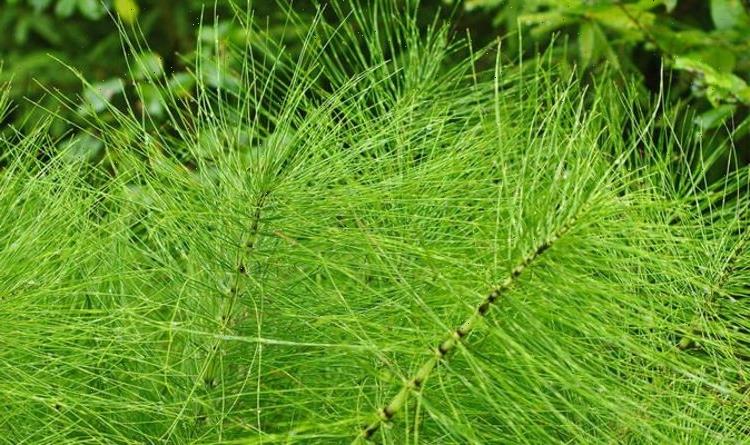Gardening: Expert shares tips for weed control
We use your sign-up to provide content in ways you’ve consented to and to improve our understanding of you. This may include adverts from us and 3rd parties based on our understanding. You can unsubscribe at any time. More info
Mare’s tail is similar to Japanese knotweed in that it grows from the smallest amount of retained rhizomes and can push through tarmac and through voids in concrete. Mare’s tail spreads rapidly to form a dense carpet which can crowd out less vigorous plants. Express.co.uk has compiled a guide to help you get rid of mare’s tail.
Mare’s tail, also known as horsetail, is an invasive, deep-rooted perennial weed which spreads quickly.
The weed can rapidly form a dense carpet of foliage, crowding out less vigorous plants in beds and borders.
The species are deep-rooted and have fast-growing rhizomes, which are underground stems.
These plants will quickly send up dense stands of foliage.


Mare’s tail is easily recognisable by its upright, fir tree-like shoots which appear in the summer.
During the spring period, fertile light brown stems around 10 to 20 inches tall may appear.
These plants take the form of cone-like spore-producing structures at the end of these stems.
In the summer period, the mare’s tail often sees sterile green shoots develop into fir tree-like plants around two feet tall.

How to get rid of mare’s tail
Horsetail is extremely invasive and can rapidly take over a lawn seemingly overnight.
You should try to kill this tenacious plant and its root networks to ensure it does not wreak havoc in your garden.
Mare’s tail can easily resprout and killing it is a serious challenge, but it can be achieved in a number of ways.
DON’T MISS
White vinegar weed killer: How to make weed killer with white vinegar [INSIGHT]
Gardening expert explains how to remove weeds from paving [PICTURES]
‘Do not compost the roots!’ Monty Don shares weed control methods [EXPLAINER]

Chemical weedkiller
If you are planning to use chemical controls, you should remove the dead mare’s tail ideally in the winter months or early spring.
Do not spray too early in the season, but instead wait until the horsetail is approximately four to six inches tall.
Spray using a herbicide onto the weed and ensure the plant is fully covered with a fine or medium spray.
Mare’s tail usually takes one to two weeks to turn brown but will take longer to disappear and die.
The longer you wait the more likely you are to see better results.
Once the mare’s tail is black and dead, it can be raked and cleared away, which is due to its ability to regrow it from very tiny root particles.
Often repeat applications are needed to ensure horsetail disappears permanently.

Natural control methods
Some believe raising the pH levels of your soil can help control mare’s tail.
Increasing the soil alkalinity can discourage the plant’s growth, as well as improving soil drainage in the vicinity.
You should wait a minimum of two weeks and then apply an appropriate fertiliser for the desired plants in which the mare’s tail is growing.
Do not apply the lime and fertiliser at the same time as this will reduce the effectiveness of the liming.
This method should be undertaken every one to two years.
Manual removal
Removing mare’s tail by hand is a very difficult process and involves a massive amount of patience.
As soon as shoots appear, you should reduce the level of infestation.
It can take a number of years to completely remove mare’s tail by hand.
You should not try to dig out the mare’s tail as a small piece of root can easily grow.
Make sure not oy rotovate the ground where the horsetail is growing which will make the problem worse.
Often mare’s tail can be kept under control by regular mowing, but it will not totally eradicate the problem weed.
Source: Read Full Article
